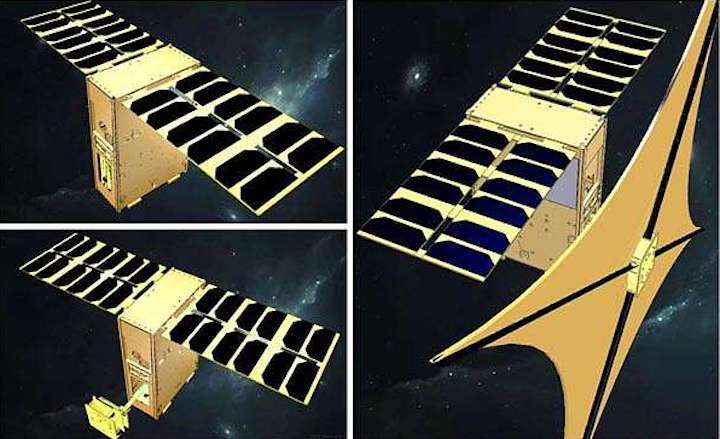4.01.2020

The Shenyang Institute of Automation (SIA) announced on Thursday that China's first solar sail, SIASAIL-I, has successfully verified a number of key technologies in orbit, a big breakthrough in China's solar sail development.
The solar sail developed by the institute of the Chinese Academy of Sciences based in Northeast China's Liaoning province is a spacecraft powered by the reflected light pressure of the sun on the spacecraft's membrane.
Because it does not consume additional chemical fuel, a solar sail is considered to be the one and only spacecraft that may reach outside the solar system. It can be applied to a wide range of fields, including asteroid exploration, geomagnetic storm monitoring, solar polar exploration and space debris removal.
On July 20, 2001, Cosmos-1, the world's first solar sail spacecraft, was launched from a Russian nuclear submarine. Other countries, like Japan, the United States and the United Kingdom, have since carried out research on the technology and application of solar sails in orbit.
Founded in 1958, SIA focuses on robotics, industrial automation and optoelectronic information processing technology. As the cradle of China's robot industry, the institute leads the research and development of Chinese robot technology.
SIA started scientific research on the design of space flexible deployment mechanism in 2011. SIASAIL-I is one of the first products.
Liu Jinguo, deputy director of the SIA Space Automation Technology Research Office, led the team in the design, technical verification and environmental tests of the solar sail.
Liu said that they managed to fold the flexible membrane and put it into the deployment machine, which is smaller than a billiard ball.
After the satellite platform is put into orbit, scientists carry out technical verification through two-stage deployment. At the first stage, the solar sail body is pushed out of the satellite platform and turned 90 degrees.
The second stage is to erect masts and gradually spread the sail. The unfolded solar sail is about 0.6 square meters, which is equivalent to the size of eight Macbook airs laptop computers.
According to SIA, data and pictures returned from the satellite show that the key technology test of "SIASAIL-I" solar sail is progressing smoothly and successfully, including tests on the micro-satellite deployment system, and flexible sail membrane material.
SIA will further strengthen cooperation with relevant units at home and abroad and strive to realize China's first space science exploration mission based on a solar sail.
Quelle: SD
